

Join us for a creative day out in our East London studios!
Our Beginner’s screenprinting workshops are perfect for those with little to no experience, all we ask is that you bring without an A4 black and white design saved in one of the following formats: JPEG, PNG, PDF or PSD.
This can be anything! A scanned/photographed illustration or painting, a digital design, a photograph whatever you fancy. You will be taught the whole process from start to finish, how to artwork your designs, different techniques with examples in our studio, preparing your screen and finally printing in the afternoon.
At the end of the day, you will walk away with your own mini edition of screenprints and a smile on your face having spent a fun-filled day in our fabulous studios with our amazing technicians.
Workshops start at 10:30 am and finish around 4:30 pm, (finishing times may vary slightly.)
If you do have any questions, please email [email protected]



Workshops are hosted in our East London studios, 10-28 Millers Avenue, E8 2DS, we are tucked away just off of Arcola Street!
Our nearest stations are Dalston Kingsland, (8-minute walk), and Dalston Junction (12-minute walk). The closest bus stops are Princess May Road and Shacklewell Lane where the following buses stop: 67, 76, 149 and 243.
There is no parking available on-site, however, there are a few car parks nearby within a 15-minute walk of the studios. Alternatively, you may be able to find closer parking using the JustPark and YourParkingSpace apps.


Here at Print Club, we love to support local businesses, here are a few recommendations for grabbing a coffee for your daily caffeine boost, tasty lunch spots to fuel your day or places to go for a well-earned meal after a day printing!
L’atelier Dalston – across the street resides L’atelier, open every day for fresh coffee, juices, sandwiches and delicious pastries.
Cafe Mélo – open 8 am – 4 pm Cafe Mélo prepares everything onsite, sourcing ingredients from local suppliers. There is something for everyone providing vegan and gluten-free options for their breakfasts, lunches and sweet treats.
Papo’s Bagels – NYC-style bagels produced fresh in their bakery every day, open Wednesday – Sunday, 9 am – 2 pm, make sure you get there before they sell out!
Mangal Ocakbasi – In our opinion the best Turkish food in the east. Directly opposite our studios, we make a weekly pilgrimage for a chicken kebab. Takeaway is always fresh but dine in for the real experience.
Corrochios – Corrochios have taken over the basement space belonging to our lovely neighbours Castle Gibson. If you know Ruby’s cocktail bar, run by CG’s son Tom, this is just next door. Authentic Mexican, so good and the cocktails are delicious!
Rainbow Bakery – Traditional West Indian food, freshly baked everyday, we love their Pati’s! Head to their Instagram to view their daily menu.


Our Beginners Workshop voucher makes for a thoughtful present for the budding creative. It’s a practical, hands-on and, most importantly a fun day of getting messy and creative.



Introducing our 2023 artists in residence! We are so excited to introduce the 2023 intake to our artist residency programme.
Each artist will spend a month in our studios, with free use of our screenprinting studios and facilities and dedicated support from our technicians and curatorial team. The culmination of the residency month will be the launch of a new collection of artwork in the online gallery!
We are so excited to to introduce you to this incredibly talented bunch of artists, and we can’t wait to see what they create in the studios. Follow us on Instagram @printclublondon to see their progress.


Valeska Hykel is a painter and printmaker based in Bristol. Her work is an ongoing dialogue between these two practices. Painting directly onto the screen’s mesh she creates monotypes that toy with the boundaries of painting within print. In these works, she embraces the hand of the artist — through expressive brushwork, visible pencil from drawing on the screen and allowing the scars of the process (for example, the textual components of canvas or screen-bed) to add to their narrative. Going beyond the first pull of the monotype, she often finds the finished work in the ghost print. The resulting works, with their muted colour palettes, degradation of image and echoes of the proceeding pull, are haunted versions of the originals, ingrained with their textures and history.
Valeska was awarded the Rebecca Smith Prize for Printmaking. In 2022 she was selected as a ‘Top Pick’ from the Curated Hang by the directors of Woolwich Contemporary Print Fair.



Jemima Sara is a multi-disciplinary artist addressing self-expression and aspects of mental health. Her approach to drawing is enriched by a background in puppetry and plays on the fluidity of everyday life.
Merging diaristic texts with the figurative, her practice derives from the ‘nitty gritty’ and day-to-day. Predominantly word and image, these pieces mostly need little explanation as they are, to some extent self-identifying. In recognition, the viewer is invited to question their response and positionally if they desire.
A form of personal outpouring, her illustrative journals are suggestive of wider experiences within both private and public spheres. Scraps of humour provide some relief from the discomfort or awkwardness they may impose.
Tongue-in-cheek and ironic, the gestural mark-making relentlessly deconstructs our constant search for perfection. Jemima tests ways of representing illusions and the mutability of human nature using resonant statements, through her story telling, frank views of the world are captured and articulated.
Led by notions of the ‘political-personal’, the witty and satirical drawings narrate stories of identity, self-observations, mental health, meme culture, graffiti and social media. In reflecting, confessing and revealing the struggles of daily life, they ignite conversation as a form of self-therapy or so called-catharsis.



Kate Mary is a Glasgow-based artist and designer working predominantly with Oil Pastels and Acrylic. She completed her honours degree in Interior Design at the Glasgow School of Art, graduating in 2019.
Kate’s practice is largely 2D drawings and paintings. These are detailed, idealised representations of places; collaged together to form immersive and calming visions of escapism. They are influenced by memories of local and far-flung journeys she makes, and the architecture, light, and pattern within them. Kate’s work explores and responds to our built environment, capturing moments of intrigue in order to create intimate and otherworldly scenes.
Kate is the 2022 winner of the Delphian Gallery Open Call for both residency and group exhibition. She has recently exhibited with Auction Collective ‘The Beat Goes On’ London Design Festival with Heals ‘Lockdown Art’, Delphian and Murus. She has been featured in Wrap Magazine, Architectural Digest France, the Sunday Times and Reclaim.



Sonofafox is Brian Giles, an Irish Printmaker and Graphic Designer based in Dublin. Through the process of Screen Printing, he loves to experiment with graphic abstract textures and strong colour combinations. Often combining these two elements to produce bold and colourful artworks.



Xander Coy is a British painter and collagist. Heavily influenced by the imagery of Pop Art, Collage and Surrealism he draws on a variety of visuals for his own work, ranging from vintage 1950’s posters to modern day cartoons.
Drawn to collage because of the boundless creative possibilities it has to offer Xander juxtaposes seemingly disparate images and forms to create a narrative. Narratives of escapism, yearning, vulnerability and transience are often the result.
Xander is fascinated with semiotics – how meaning is created and how meaning is communicated is often at the forefront of his thoughts when creating work. Signs and symbols regularly appear often slightly altered or recontextualised to give a different meaning. In the same way a kid might draw a smiley face over a picture of a circled sun or a moustache over a face Xander displays the same playful approach of reinventing familiar images in his work.
Working on canvas and paper as well as on the streets each image he creates is brimming with contrasting colour, pattern, scale, light and shade. Regularly using a hot or cold palette (or occasionally both), surprising harmonies are generated through vibrant chromatic extremes. Colour is king – a realm of constant pleasure.
Having studied drawing and painting at the Slade School of Art, Xander has shown his work at a number of galleries across the UK including Jealous Gallery and Saatchi Gallery. Working from his hometown London, Xander continues to exhibit across the UK and beyond.





Milenko Stevanović is a painter and printmaker from Serbia, currently residing in Cyprus. He graduated from the Faculty of Applied Arts in Belgrade, Serbia; and completed postgraduate studies in Fine Arts at the Oil Painting Department of the Tokyo University of the Arts in Japan.
Through the practice of direct observation, his work examines the formal aspects of the language of representational art, exploring themes of human form and interactions in an urban environment. Moving between the media of painting, drawing and printmaking, Milenko uses the limitations and aesthetic qualities inherent to each different process to further his ideas of form and composition.
Milenko has exhibited his work internationally with solo exhibitions in Serbia, Japan and Cyprus.
He has taken part in curated and juried exhibitions, most recently the Royal Society of Portrait Painters, Royal Institute of Painters in Water Colours and the Royal Watercolour Society in London.
We are not currently taking applications for our artist residency, but if you are interested in a future residency then please send your CV and a small pdf of your work to [email protected] with a covering letter and we will save down your application for the next review. Please note that all residency spots for 2023 have been filled, so this would not be until the end of the year at the earliest.
Video on how to clamp screen on a traditional Kippax screen printing bed
What is a colour blend in screenprinting?
A colour blend is the gradual merging of two colours to create a gradient, resulting in fewer layers being printed.
Artist M.O.L. is going to demonstrate how to create a colour blend.
M.O.L has prepared the image in advance normally in photoshop digitally. The colour blend layers are treated as though they are flat spot colours at this stage, so they are separated from the main image and made pure black by bitmapping using a 50% threshold.
When choosing your colours, it helps to have a colour wheel to hand. Ideally, they should merge into each other well and not mix to make a new colour, so opt for colours that sit next to each other on the wheel.

With M.O.L’s print, his second blend layer sits on top of the first in some places. To achieve a good overlay a bit more binder has been used to make the inks more transparent.

The screens are prepared as normal and materials are gathered. Take note of the order the layers will be printed so that the screens are put in the right place on the bed. The blend must go horizontally when printing.

To start the blend the ink is positioned at the top of the screen, keeping the colours separate by tapering so that when the squeegee is pulled for the first time they will blend together.

After several pulls, the inks should start to blend together on the screen. The squeegee needs to be straight when pulling and flooding so that it is consistent when printing.

The squeegee can be angled when flooding if the ink needs to move in a certain direction.

Here M.O.L. is registering the second blend layer onto the print. After the second blend, a further skin tone and black halftone layer have been added. M.O.L. has demonstrated the efficiency of using blends by ending up with such a broad colour palette in his final print.

As part of the launch of Haig Club’s Mediterranean Orange spirit drink, we were live printing with guests at the event. Designs were created by our Creative Director, Rose Stallard, guests were able to choose which phrase they would like and print this over the top of a pre-printed orange layer.


We also hosted an afternoon workshop for Haig Club guests at our Hackney Studios, where guests were able to bring their own design whilst also enjoying a Haig Club Mediterranean Orange and Lemonade #drinkaware




To launch the opening of Levi’s renovated store in Carnaby Street, we live printed onto different jackets and t-shirts for Red Label members.



Coach’s event New York Nights celebrated the release of their latest collection of bags, the Pillow Tabby. We live-printed 3 different designs at their event in ink pantone matched to the pastel colours of their Pillow Tabby bags.




Our team went back in time to Goodwood Revival with Mini Classic; live printing posters of their classic cars for visitors.
Scroll down the view our activation in their space!






Once a month we host Life Drawing classes in our Print Club London Gallery every month 6pm – 8pm.
Limited spaces available contact [email protected] to sign up!
Introducing the Print Club Playlist! See what our members are listening to in the studio right now this season. Made by our members, for our members!
Each playlist contains our members current favourite tunes that they have been listening to whilst getting inky in our Hackney studio. Hope you enjoy, we can’t wait to listen with you!

Join us for a fun night of doodling in our Hackney Studios led by illustrator @geolaw. Enjoy a drink on us, take part in doodle club and try your hand at screenprinting in the studio!
All welcome but RSVP is essential! Please RSVP to [email protected].



Run Club with Creative Director Rose Stallard!
Midday every Monday, Wednesday and Thursday
Join our studio Run Club for a 20-25 minute lunchtime jog in the fresh air, everyone welcome! Just let Rose or one of the Print Club team know you would like to join the run
‘Where there’s printmaking, there’ ink. Fred Higginson of Print
‘Club London is here to shout about the skill of colour mixing.
“Dont leave it to guess work. Always keep a note or take a picture
of the colours you use. As you grow as an artist, your colour palette
becomes part of your signature and its no good if you can’t mix a
colour again when you need it,” he says.
Print Club’s in-house commercial printers, Tuckshop, are fastidious
about recording formulas for every colour they create. They use
Pantone colour reference books as a starting point, but pigment loses
a little bit of vibrancy each time you mix it, so mixing to a Pantone
base and then again to the desired colour isntt the best way to come
up with new colours. “It soon became evident that we needed to
throw out the rule book and start again,” says Fred. That’s when
Print Club Ink was born.
A150 mile jaunt up the M1 to Screentec HQ in Stoke-on-Trent
‘opened up a whole new way of colour mixing, and now they’re
sharing it with the world. Print Club has used Screentec water based
eco-friendly inks for over 15 years, and Fred is a big fan: “Frankly,
Thaven’t come across a better ink, so why change?” A few days with
their colour specialists (and several all-you-can-eat Chinese buffets)
resulted in eight triple-milled pigment inks spread evenly across the
colour spectrum which now form the basis of Print Club Ink. The
idea is simple: start with the most vibrant colours as building blocks,
and develop a free colour library that anyone can use. “We’re making
it really accessible with ‘how to mis’ tutorials and a platform for
people to show off their artwork and share their newly discovered
colours,” says Fred, “We hope you’ll be as excited about this new
approach to colour mixing as we are!”


Make a ‘Digital Swatch’ of your colour, First find the colour reference number , then make it using ‘Color Libraries’ in photoshop.

Do not colour match from your monitor as all monitors are extremely different. match your colour to a colour reference book.
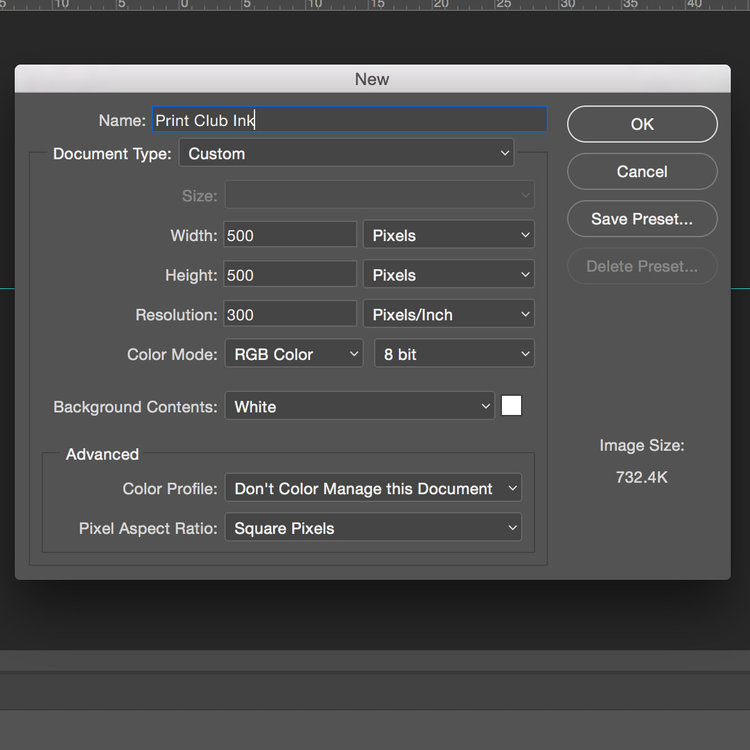
Make a new file that is 500 x 500 pixels.
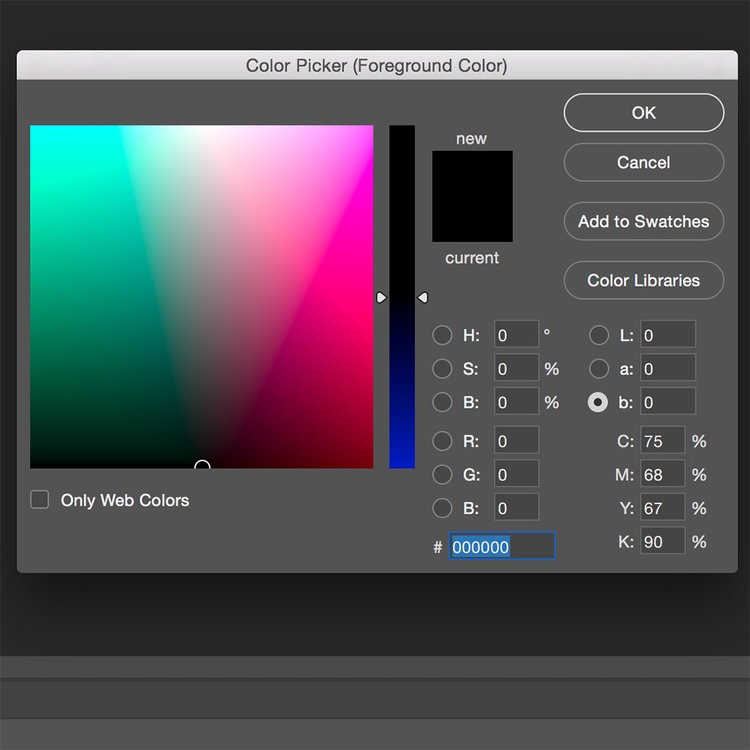
OPEN the color picker by clicking the ‘foreground color’ button. SELECT ‘Color Libraries’.
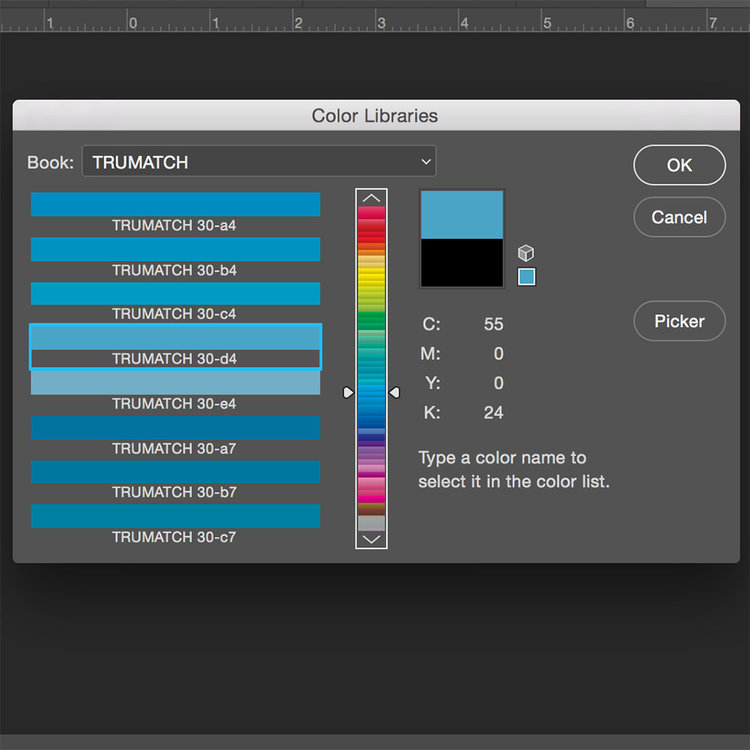
SELECT the colour referencing ‘BOOK’ that you are using. TYPE the colour name or number (quickly) to find your colour

BUCKET TOOL your colour into the file , save . and email [email protected] with your formular and file.

If you want to share your colour being printed or poster and any other information please include.
The ‘Reduction’ technique is weighing the base colours first then once you have created a colour, measure the unused ink to create the formula.
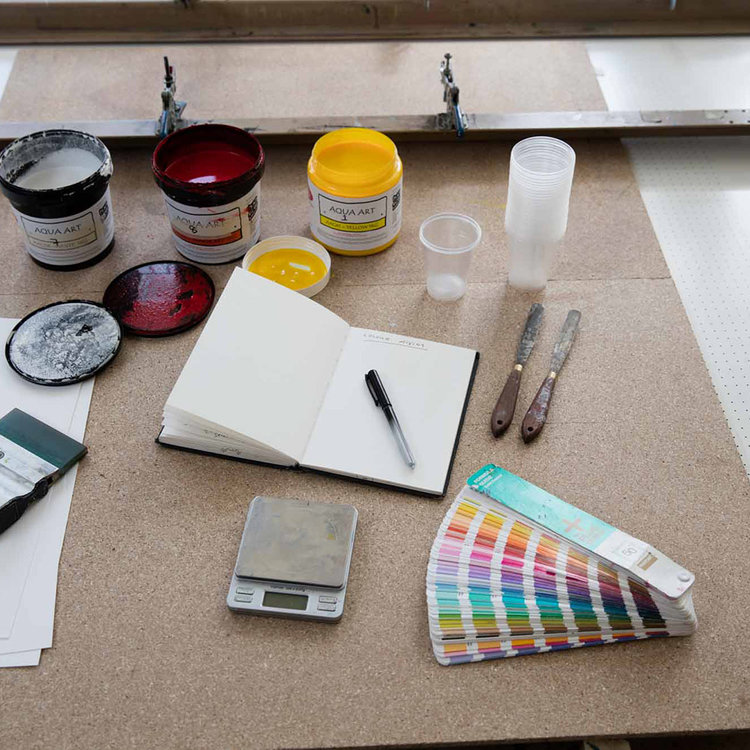
step 1
Start by making sure you have everything you need to hand. This includes the inks you will need to mix your desired colour, a colour swatch book, various mixing palette knives, cups, and some scales. Additionally you will need some test paper, a test screen and a squeegee!
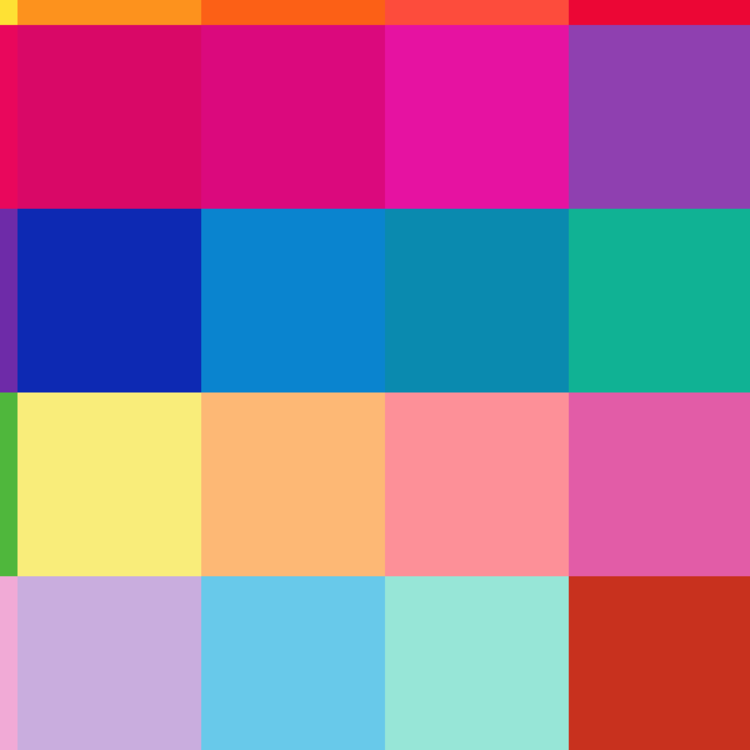
step 2
Find a similar colour in our colour library, make a note of its Base colours and any other base colours you think it may need.
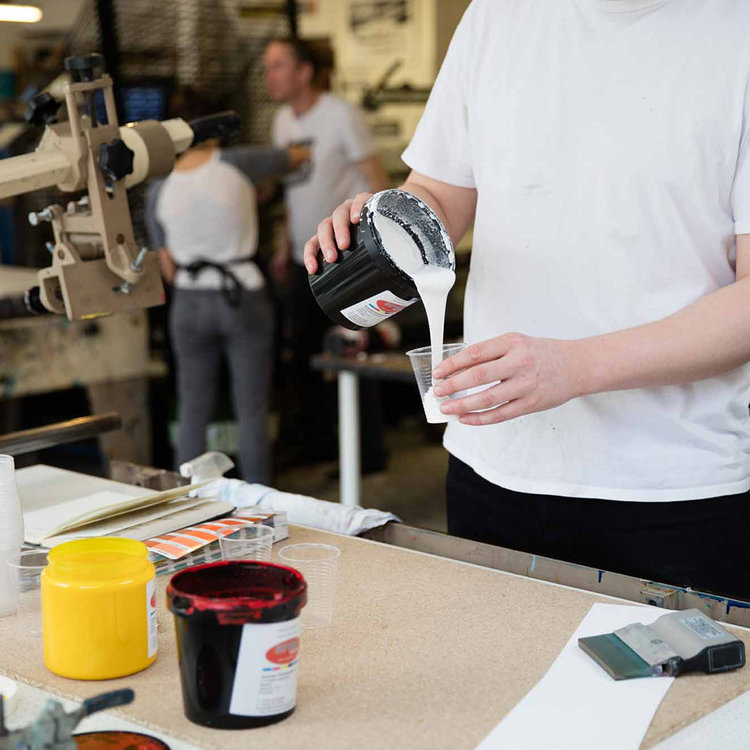
step 3
Now start by pouring the Base inks used in the formula, into separate identical cups. Try and pour in roughly the same amount to each, but it doesn’t have to be exactly the same.
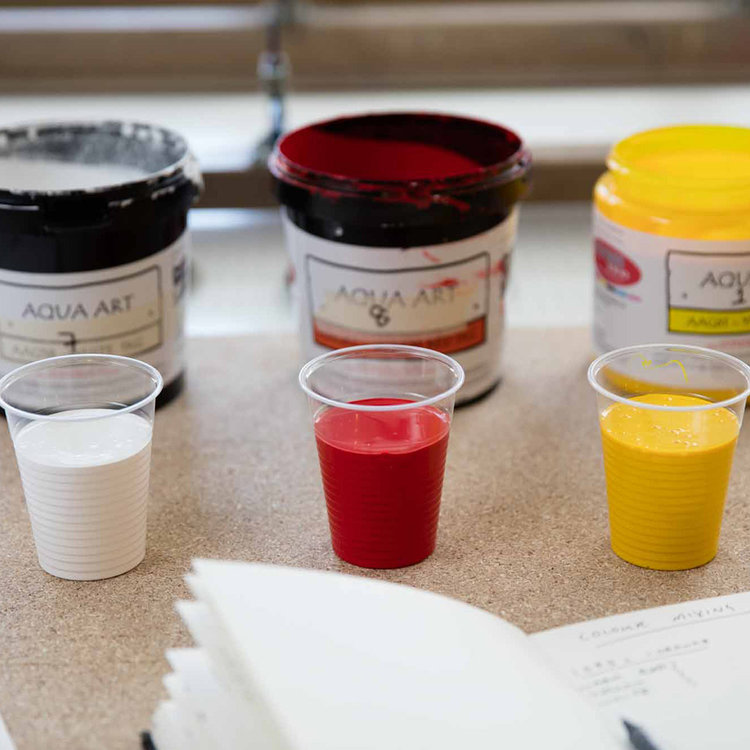
step 4
Leaving you with something like this, 1 cup of ink for each colour you will need to mix your desired ink up.

step 5
Now you need to weigh each pot and make a note of the weight of each one.
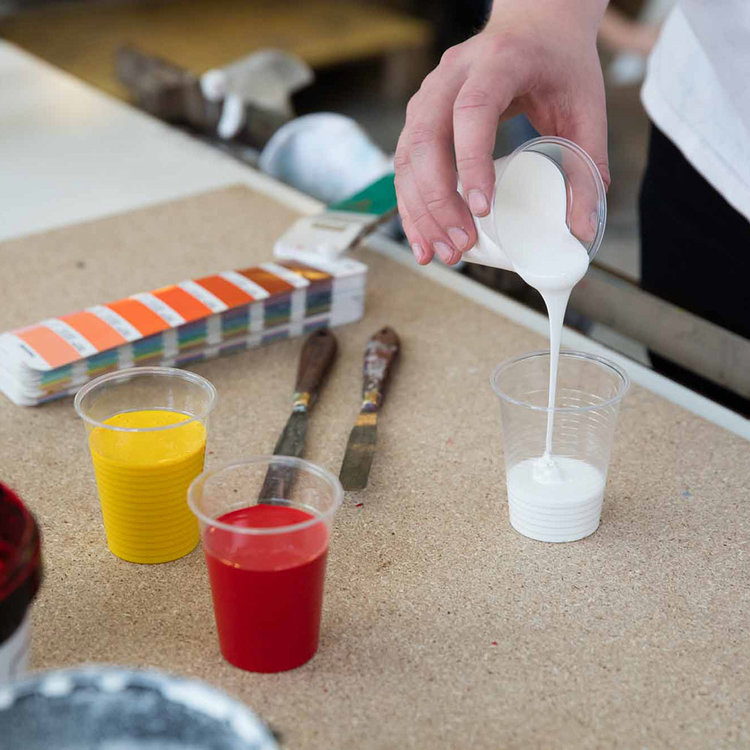
step 6
The next step is to get a new pot and start pouring inks in. This is the pot that you are going to mix your final colour up in. At this stage you are just using your eye to try and get close to the colour you need. Try and keep your ink pots separate and don’t contaminate the colours together.

step 7
Using a palette knife at this point can really help as it allows a precise amount of ink to be poured into your mixing pot.
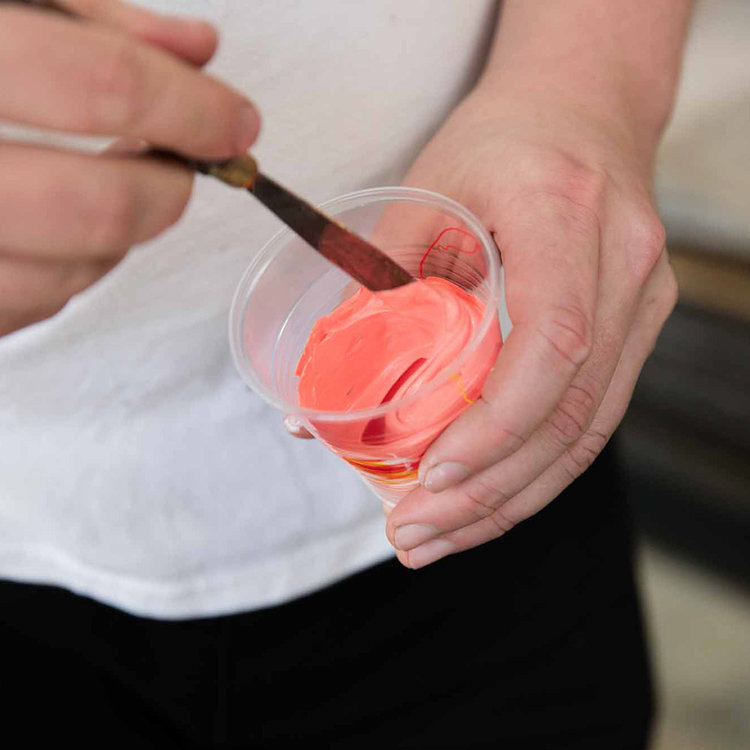
step 8
Make sure you mix the inks up very well in your pot.

step 9
Refer to your colour swatch book to see if the colour is close to it. The colour will look slightly different when printing so don’t treat this as final!
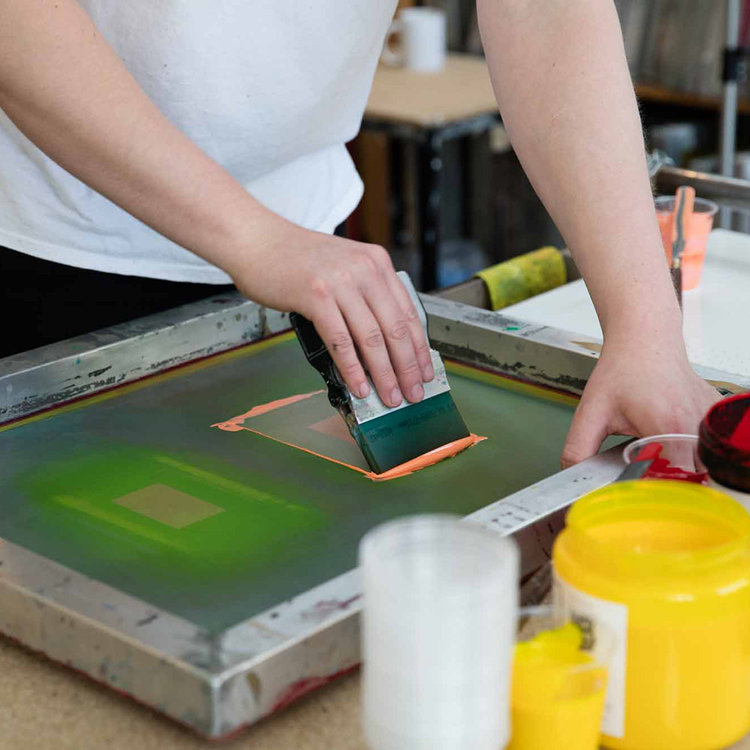
step 10
Using a small screen with a little square exposed into it you can do a test print using your colour. If you have a small screen you shouldn’t need to lock your screen into a bed, and can instead your hand to hold your frame up creating a snap and allowing you to print. Once you’ve printed be sure to clean the ink out of your screen.
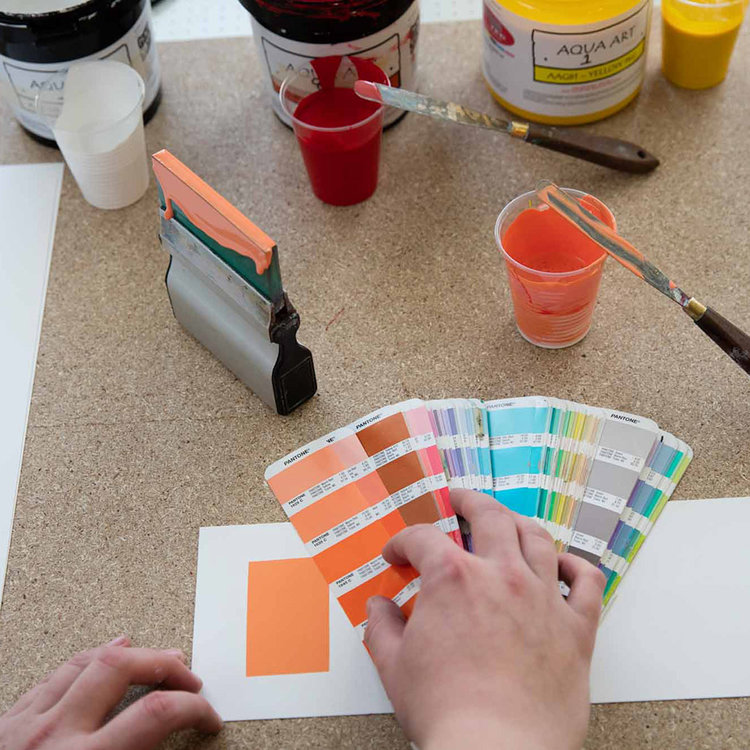
step 11
You can now look at your colour swatch book and see how close your colour is. In this case the colour is a bit lighter than it needs to be so a bit more red should be added.
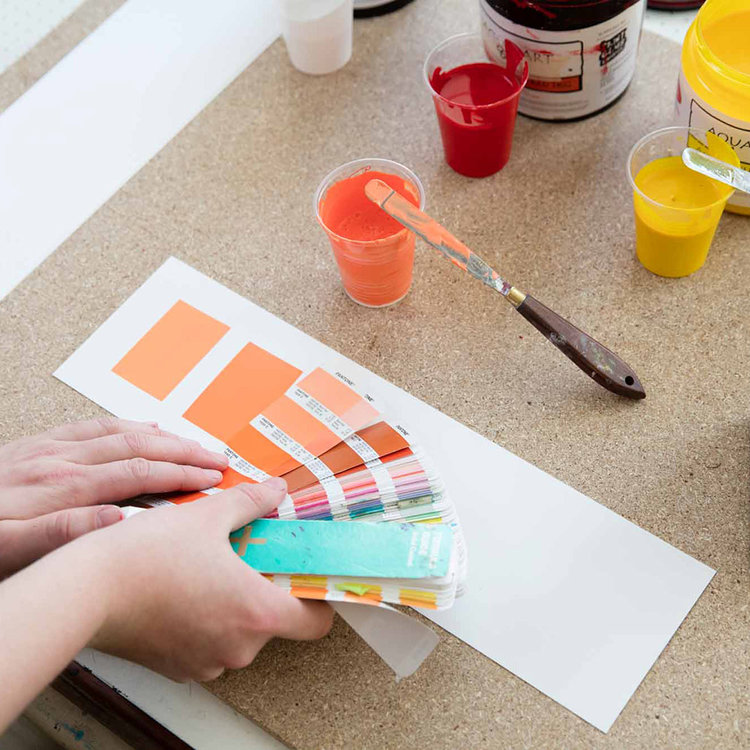
step 12
The red has been added and another test print has been done. Here you can see its still a bit too light, so more red will be added again.
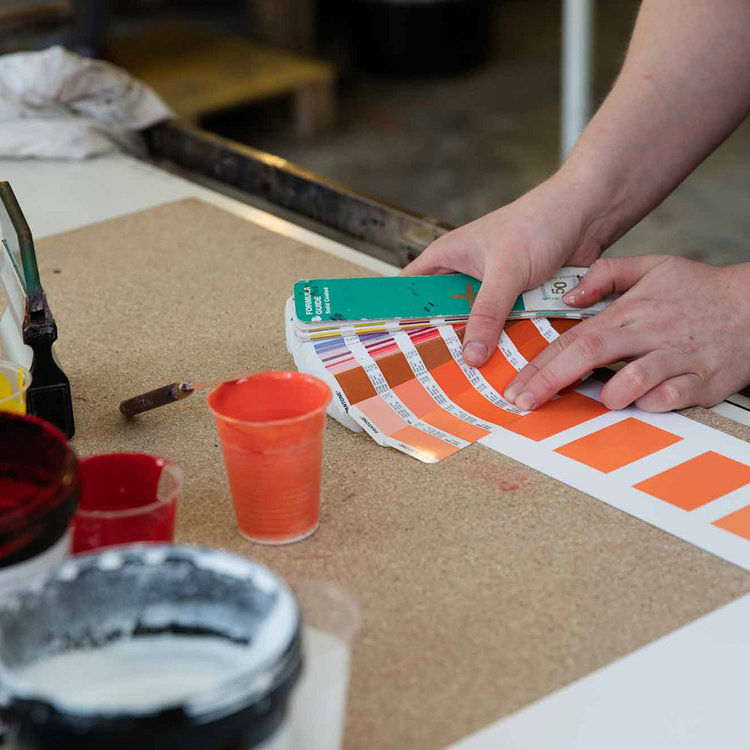
step 13
The colour has been mixed and re-printed 2 more times and is now spot on! It can take some time to mix by eye, but be delicate with the amounts added each time. If you use too much of one colour then it might not be possible to mix up your desired colour with your initial range of inks.

step 14
The next step is to measure how much ink remains in each of your pots and make note of it next to how much the pot originally weighed. Then subtract the totals from each other to work out how much of each ink you used from each pot.
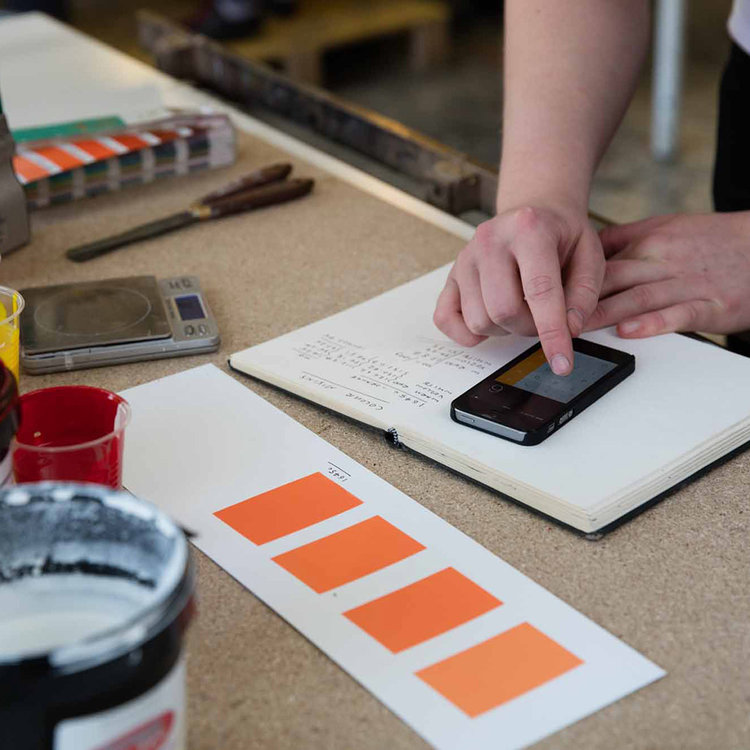
step 15
By knowing how much you used you can now work out the ratios of each ink required to mix your desired pantone colour. Start by adding the weight together of all the ink used. Then divide the weight of each ink by the total sum and multiply by 100. This will give you a percentage out of 100 to know how much of each colour to use. Make sure your ratios add up to 100 at the end and the formula is complete!
We’ve been talking to artist David Studwell and photographer Scarlet Page about their series of limited edition Liam Gallagher screenprints. Scroll down to find out more behind the portrait and the process of their collaboration!


Liam Gallagher – Copper by David Studwell
Edition of 15, £600


David Studwell combines traditional printmaking techniques with a modern approach to create dynamic and vibrant artwork. He is influenced by popular culture, cult movies and Pop Art in particular, which is evident in his extensive and exciting range of prints. Having studied art and design at the prestigious Central Saint Martins, Studwell joined a printmaking studio in West London. He has exhibited in The London Print Studio where he makes the majority of his work as well as showing in other galleries in London and the USA. David has been published several times; his work has been featured in GQ, Elle and World of Interiors magazines, as well as French broadsheet Le Monde diplomatique a number of times. David has a celebrity client base and has been collected by Kate Moss and Nile Rogers of Chic.


David – My work focuses on celebrity, the dark side as well as what we see in magazines or on TV.
It harks back to classic bygone eras like the sixties and the seventies; a time when celebrity held a different meaning to what it does today. It was somehow more dignified and glamorous back then.
In terms of the Liam Gallagher project-I chose to switch my gaze from those classic eras to the nineties when Britpop was exploding in the UK.

David – Scarlet Page has been on my radar for a while because we are represented by the same gallery. She is the daughter of legendary guitarist Jimmy Page of Led Zeppelin fame and therefore has a very strong music connection which is right up my street. I was at art school when Oasis were being blasted out over the airwaves so it felt only natural to switch my focus from those classic bygone eras to the nineties-arguably a classic era in its own right-certainly in terms of popular music.
I wanted to echo the hedonism of those times which is why I decided to use diamond dust and metallic inks to add a level of glamour to the works.

Liam Gallagher – Blue by David Studwell
Edition of 15, £700

Scarlet – This shot was taken in the daytime before a Black Crowes concert it was for a feature for an American magazine to do with an upcoming tour called ‘Brotherly Love’ with the Black Crowes and Oasis. There were plenty of jokes, beer and cigarettes in the corridor!
David – To me the images look like they were taken in a studio; adding a certain glamour and capturing the hedonism of those times. I wanted some of the grime and grit of a band on the road to remain in the images as well.


Liam Gallagher – Orange by David Studwell
Edition of 15, £600

David – Liam was the frontman of Oasis and although Noel wrote much of the music, Liam was always at the front of everything. For me he also epitomises rock n roll.
He had a certain swagger and captivated audiences. Liam had rock n roll attitude in abundance which Scarlet captured perfectly in the photograph.

David – I wanted to encapsulate the glamour and hedonism of Britpop in the nineties; which is why I chose to create some editions in diamond dust and some in shimmering metallics.
When Oasis played Knebworth towards the end they were playing to record numbers of fans-They had an enormous and loyal following.

Liam Gallagher – Platinum by David Studwell
Edition of 15, £600

David – I recently created a series of screen prints of Marion Cotillard which was a refreshing step into the present. I believe she will become an icon in time, she has classic beauty and a timeless quality to her.
In terms of future projects I’m currently negotiating a project with a Hollywood actress which involves creating an exclusive series of screen prints of her. I’m afraid I can’t let the cat out of the bag just yet but all will be revealed soon.

Liam Gallagher – Pink by David Studwell
Edition of 15, £700


Last Friday, we visited the Tate Modern to see an exhibition we’re very excited about – The Ey Exhibition, The Making of Rodin.

The EY Exhibition : The Making of Rodin
Tate Modern
Until 21st November
The exhibition focuses on Rodin’s works in plaster and explores his approach to making. Inspired by a major show in 1900, the exhibition shows sculptures from throughout Rodin’s career.

We loved how they have created the sense that you are walking through the artists studio. Throughout the main room there are several examples of the artists preliminary studies alongside enlarged final works.


We also loved discovering Rodin’s watercolours of swimming figures, a side of his work that we had now seen before, but in which he explored the fluidity of the human form as a study for his sculptures.

The shows has a strong emphasis on process and materiality which we love to see. It felt as though we had been given a sneak peak behind the scenes of the recognisable Rodin sculptures we have seen before.

Thanks for having us Tate Modern! If you like what you saw and would like to visit the exhibition in full you can book a ticket here.
Back in the gallery we’ve got lots of prints that celebrate the amazing architecture of the Tate Modern.

Tate Modern Boiler House Room by Underway Studio
£85

Southbank Power Station by Tirso Sanchez
£60

£180


Another scorching summer day in London and we took a trip to our neighbours at the Whitechapel Gallery to see Angel of Anarchy, an exhibition of works by Eileen Agar.
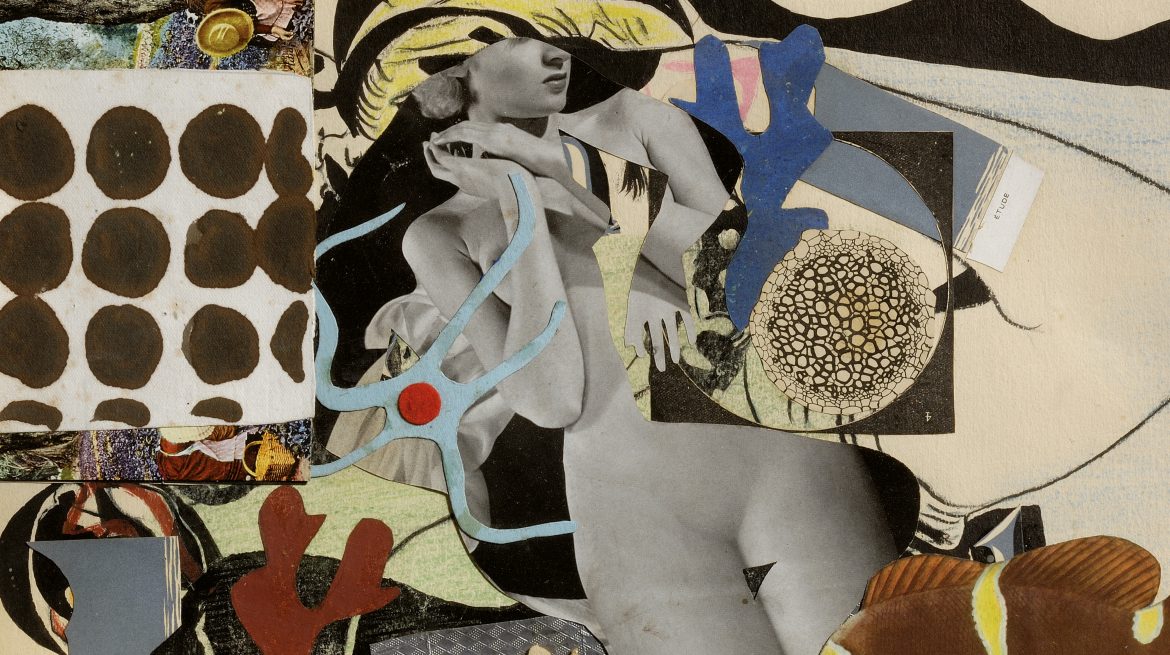
Eileen Agar
‘Angel of Anarchy’
Whitechapel Gallery
19th May – 29th August 2021
Eileen Agar was one of the most adventurous and prolific artists of her generation. Across he 70 year career her practice explored collage, painting, sculpture and photography.

Born into a wealthy family, Agar sought her artistic practice against her strict parents wishes. After being sent to England with the intention to study at academic schools she instead pursued her aspirations and enrolled at Slade School of Art in 1921. The exhibition details the variety of Eileen Agar’s practices from still life studies to sculptural figures.

Agar was fascinated with the natural world and used travel as a constant inspiration for her works. We loved the photography series of rock formations in France which was later reinterpreted as a collection of paintings.

The collages within the exhibition have been framed thoughtfully allowing you as a viewer to get up close and personal with the textural pieces. We also loved the behind the scenes displays of Agars sketchbooks and experiments.

The in depth exhibition spans over two floors of the gallery so make sure you follow the signs to view the whole collection. It’s a beautifully curated show and you also have the opportunity to view several other permanent collections at the gallery whilst you are there. Tickets for Angel of Anrachy cost £9.50 and can be booked here.

Back at Print Club HQ we take a look at some of our favourite collage works inspired by the exhibition…


£160

£100

Flaming Hearts by Lucille Moore
£95



Last week we visited the Royal Academy of Arts to take a tour of ‘The Loneliness of the Soul’. It had been two years since we saw Tracey Emin’s paintings in real life and we couldn’t wait to see them again!
Tracey Emin & Edvard Munch
‘The Loneliness of the Soul’
Royal Academy of Arts
18th May – 1st August
The Loneliness of the Soul is an exhibition of works by both Tracey Emin and Edvard Munch, it showcases the artists work side by side for the first time. Although born 100 years apart Emin recognises Munch as a ‘friend in art’.

The selection of Edvard Munch’ss work focuses on paintings and watercolours depicting the figure, particularly the female nude. Emin has always been drawn to the raw emotional content of Munch’s paintings. For this exhibition she looked through and archive of 800 paintings and 2000 watercolours before deciding on a selection of works that highlight vulnerability and loneliness.


We love how throughout the exhibition you can notice the similarities between their mark making and energy through painting.


Another great showcase of works by one of our favourite artists! Tickets for this show cost £17 and can be booked in advance here.


Back in the gallery we take a look at some of our favourite pieces celebrating the human figure…

£85

He Overthought by Gavin Dobson
£200

£150



We swapped the studio for a stroll in Hyde Park and went to see the James Barnor retrospective at the Serpentine Gallery.
James Barnor: Accra/London
Serpentine Gallery
19th May – 22nd October 2021

Accra/London celebrates the work of British-Ghanaian photographer James Barnor and showcases and archive of works from 1950 – 1980. With a career spanning 6 decades and 2 countries, Barnor witnessed major social and political changes. This exhibition is the largest survey to date and includes portraiture, journalism and social documentary photography.

After moving from Ghana to London in 1950 Barnor’s work focused on capturing the Afro diasporic communities and neighbourhoods. Throughout this time his work was often featured on the cover of Drum magazine. We especially love the cover below, shot in Kilburn in the 60’s.

Another of our favourites are the two prints below. James Barnor established the first colour processing film lab in Ghana and educated others on how to bring this vibrancy to their photos. This was specifically important to his photography peers still working in Ghana as they could portray the bright, colourful nature of their country to the wider world.

Accra/ London is such an in depth exhibition and there’s so much to see that we made sure we did a few laps of the space. Tickets for this show are FREE but you need to book in advance here. Whilst you are there make sure you grab a coffee under the new Serpentine Pavillion and also see the exhibition of paintings by Jennifer Packer in the adjoining galleries.

Back in the gallery we’ve chosen some of our favourite figurative and photographic prints inspired by our trip…

£375

The Planet Who Believed by Rosie Emerson
£215

£80


This week in Print Stories we talk to artist Stuart Forrester about the inspiration and process behind his work. Scroll down to find out more and see the artist’s process.



Stuart graduated from Central St Martin’s School of Art with a First Class BA Hons in Fashion Design followed by an MA in Film Production Design.
Over the years he has worked in several creative areas including Film Production and prop making, Art direction for Television, Product development and Interior design for both private and commercial spaces. He recently returned to his first love of image making and his work focuses on combining classical and modern imagery to create a new narrative showing how time marches forever forward but human fears and desires ultimately remain the same. His art is best described as a dark and subtle clash between the Iconic and the ironic.

The sheer comedy of existence as we battle against the knowledge of our own mortality and how that ultimately shapes our individual desires and ego.
As a starting point the solitary figure in art is my greatest inspiration, from the idealised beauty of classical sculptures, the long forgotten portraits of the once renowned through to the nonstop onslaught of social media selfie photography today, we are forever manufacturing individual tales of wealth and beauty, of power and success, to portray an everlasting perfect image… while keeping our darker truths deeply hidden to perpetuate the myth we have created … yet it is among these hidden truths that we ultimately find true humanity … and it is these tales I’m inspired to tell. Like stars in the firmament we are billions, and yet within us we each carry our own truly unique story and a desire to shine alone.

 I’ve always been fascinated by the construct of fame, the immortality this bestows upon the individual and the human desire for it. In the past people were solely famous for their achievements but in modern times fame has become the achievement in itself.
I’ve always been fascinated by the construct of fame, the immortality this bestows upon the individual and the human desire for it. In the past people were solely famous for their achievements but in modern times fame has become the achievement in itself.
By collaging an ancient icon of idealised male beauty with a modern icon of adventure… the Astronaut … And placing them both onto a circular gold leafed disc reminiscent of the iconography worshipped in certain religions, I wanted to create a visual antidote to the banality of modern fame, to create someone worthy of adulation.

Icons Change Over Time by Stuart Forrester
Edition of 69, £250


My main interest is the human condition and the tales therein, so my influences can come from anywhere that speaks of what it is to be human … films, novels, news reports, photographs, song lyrics, advertising, old family stories, childhood memories… literally anywhere mankind treads… which keeps the creative process forever new and exciting as I never know exactly what will inspire me to create next.

Scribbling…. I’m a massive fan of quickly scribbling down almost every idea that comes into my head and it’s a great way to formulate a new vision at great speed without being too precious about the eventual outcome.
Once I have a specific idea in mind I’ll research and collage images together to create the final piece to work from. I prefer to use a very limited colour palette of black, white with metallic finishes so that the final pieces can hopefully hover in time visually rather than being solely anchored to the here and now.


When I was studying at Central St Martins a lecturer once told me ‘Sketch down every creative idea you have, no matter how small or insignificant you may think it is at the time, as you can never tell what will spark your imagination next week, next month or even in ten years time.
So I’ve always followed that advice and have a large old wooden box filled with hundreds of scribbles on old napkins and beer mats and scraps of paper stretching back years, so whenever I feel uninspired I look through it all and there is usually a long forgotten gem in there that inspires my next piece of work.


My prints are visually quite simple usually on a solid black background so I would always choose a very simple black smooth float frame to complement this, creating shadow and depth behind the print.
Mr Universe by Stuart Forrester
Edition of 69, £200

I love to use negative space in a lot of my work so ideally I would curate my prints to have that same visual language when hung on a wall and stand alone or at least be surrounded by enough empty space to tell it’s own story, rather than being hung in a cluster.
In regards to pairing my work with another artist I would happily display my piece ‘Icons Change Over Time’ between a selection of Cassandra Yap’s prints ‘Royal Flushes’ on vintage adult playing cards as I think the masculine juxtaposed against the feminine in such a display would create a really interesting and humorous visual language.

Royal Flushes (King Size) by Cassandra Yap
Edition of Open Edition, £50
We loved discovering the work of Igshaan Adams in their exhibition ‘Kicking Dust’ at Hayward Gallery.
Igshaan Adams
Hayward Gallery
19th May – 25th July 2021

Combining weaving, sculpture and installation Igshaan Adams work explores themes of race, religion and sexuality. For their new exhibition of works the pieces centre around the idea of footprints we leave behind when we move through spaces.

The exhibition title ‘ Kicking Dust’ stems from a dance from the Northern Cape which Adams viewed when he was younger. The dance is thought to be one of the oldest dances from the region and dancers can be seen kicking dust up into clouds.

The gallery is hung with large scale woven tapestries along the walls, sculpted cloud forms suspended from the ceiling and a hand woven floor covering. Exploring the theme of movement, pathways have been created through the installation with the placement of these floor weavings. The artist refers to these as ‘desire lines’; mapped from improvised footpaths on the borders of town and cities were residents forge their own paths instead of following set routes. We really loved how this installation allows the viewer to choose their own direction and order of viewing the works.

Many of the pieces in the exhibition are woven artworks, taking different forms and shapes. Igshaan Adams collaborated with a group of refugee women to produce the works. With the dramatic shift during the pandemic, many of these women could no longer rely on selling their crafts at local flea markets so Adams worked with them to develop their skills and enhance products they have already produced.

The large scale weavings feature religious designs, islamic motifs and geometric patterns. With this the artist refers to ‘the islamic belief that geometry can purify the mind and soul’. By combining different coloured yarns, beads and textures the idea of creating pathways through spaces is further emphasised with the intricate detail in the woven fabric.

With the shadows cast from low hanging cloud sculptures and the textured floor weavings, the installation is fully immersive and takes the viewer directly into the craftsmanship of the artist. Kicking Dust runs at the Hayward Gallery until the 25th of July and you can book tickets here. Tickets cost £18 and also include access to the film screening of work by Matthew Barney.
We loved the craftsmanship of Igshaan’s installation and how he explores humans movement within spaces. Inspired by this exhibition we have chosen some of our favourite prints in the gallery that portray landscapes through the craft of print making .


In our new series Print Stories we talk to artist Andrew MacGregor about the inspiration and process behind his work. Scroll down to find out more and see the artists process.



Andrew MacGregor is a multidisciplinary artist based in east London. His work spans sculpture, illustration, set design and art direction.
After graduating from Middlesex University in 2004 with a BA (HONS) illustration, he has been able to expand his skillset to include three dimensional work and developed his commercial eye by working for notable brands within the fashion, art, interior design, retail, publishing and product design industries.
Since 2009, he has made a conscious effort to work with sustainable materials and is now the founder and creative director of The Colour Of Water, a creative organisation aiming to impact conservation through the power of art and community.
Macgregor’s artistic style is bold, colourful and uplifting, with great attention to detail through his use of layering and composition. From his paintings to his sculptures, there is a sense of accuracy and playfulness that captures the minds of the viewer.

 People, the natural world, the human condition, our perception of the world, our beauty, the chaos within us, the chaos we create! We’re complex sentient beings…it fascinates me to look at these complexities and how to interpret them. I see so much when I look at people. Human character can be as plain as day…if you look carefully enough!
People, the natural world, the human condition, our perception of the world, our beauty, the chaos within us, the chaos we create! We’re complex sentient beings…it fascinates me to look at these complexities and how to interpret them. I see so much when I look at people. Human character can be as plain as day…if you look carefully enough!



This body of work is about beauty and chaos. Painted predominantly using indigo ink, this series of paintings looks at our humanity, our perception of the world and our existence within the narrow void between beauty and chaos. Since one can not exist without the other, the impact this has on us every day exposes a myriad of behavioural undulations.
‘The Thinker’ (striped shirt and cigarette) is about the power of contemplation, but its also looking at the void of time we pass through via thought. The moments we analyse what we’ve just seen, or how we work through problems in our minds. I love this space….we spend more time in this space than we would ever think possible.
‘Speak Your Mind’ is purely about fear, its about the inner chaos caused by our fear of self expression. Something most of us are familiar with…Will I be judged if I speak up about something? There is only one of us, if we choose to suppress our voices…that moment will be lost forever. The growth exploding from her mind is what she wants to express, and what she values the most.

Speak Your Mind by Andy MacGregor
Edition of 50, £145


The Thinker by Andy MacGregor
Edition of 50, £145


Absolutely everywhere, its never been a single source for me throughout my whole career. If you can’t take influence from everything and everywhere, you’re not open enough as an artist. Being an artist is about responding to the world around you, and within you, after all.

I still love painting on paper so thats my surface, I like using 2b pencils to mark out what Im going to paint, then I go straight on with multiple layers of Indigo ink. I’ve found a lot of joy in limiting my colour palette lately, so Indigo is now the basis for 80% of my paintings these days.


Hate to say it, but I’m never ‘uninspired’…because of the reasons two questions previous! But…what I do have to be careful about, is making sure I’m looking after myself, my body and my mind…so that I can continue to be productive. The looking after yourself thing has always been a tricky one for me.


I love box frames, because I don’t like the glass anywhere near the artwork, it looks more special in a box frame too. I’d love to see one of my pieces in an indigo stained/painted timber frame…that could look beautiful.
However, I’d normally just use a black stained, narrow faced timber box frame with Art Glass. You cannot go wrong with that spec.

I think the indigo blue requires space around it, its that kind of colour and that kind of subject. If it were me, I’d always display three indigo prints/paintings in a line or cluster. I have three pieces coming soon via The Print Club so thats what I’d do.
Regarding pairing with other works…I’d select pieces that are close in the colour spectrum, so from deep indigo blue, I’d look at Purples into Reds or Teals into Greens. I love ‘complimentary or opposite’ colours but I wouldn’t create a colour war with these particular pieces. Our lovely customers will of course be allowed to do what they like as its their walls.

With all galleries reopening we are so pleased we managed to see an exhibition of new works by one of our favourite artists, Rachel Whiteread.
Rachel Whiteread
Gagosian
April 12th – June 6th 2021

The show, ‘Internal Objects’ spans the whole of the Gagosian gallery and showcases installation works as well as resin sculptures and abstract mark making works on paper. As with many of the artists previous exhibition there is a strong sense of minimalism and emphasis on minute details of each material, be it in the way the light reflects off of the curved resin sculptures or the embossed layers of cardboard.

The showstoppers of this exhibition are two full scale cabin-like structures. In contrast to previous sculptures of this kind the artists has not cast this series but instead constructed the sheds herself from found materials and covered them in white paint. The buildings are open so you can view them internally and externally. There are also objects and branches causing destruction to the pieces, showing the artists link with the natural world.

Much of Whitereads work focuses on the use of negative space to create hidden narratives and stories. Whilst none of the work in the exhibition was captioned or titled it allows the viewer to make their own interpretations of the connections between the sculptures.

Internal Objects is on show at the Gagosian until the 6th of June so don’t miss out! You can book to schedule your appointment here.

We love how Rachel Whiteread fills the space with minimal and monochrome works. We’ve chosen some of our favourite pieces from our gallery that focus on the simplicity of materials.
